Iranian Filmmakers Form Association Independent Of Government
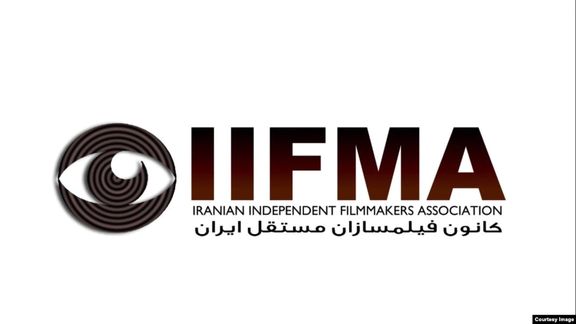
A group of Iranian filmmakers have formed a new entity called “Iranian Independent Filmmakers Association” in support of the antigovernment protest movement.

A group of Iranian filmmakers have formed a new entity called “Iranian Independent Filmmakers Association” in support of the antigovernment protest movement.
In their statement on Monday four issues have been raised as the goals of the association.
Preventing repression and violence against peaceful protesters and innocent children, unconditional release of prisoners, drawing the attention of the world's filmmakers to events in Iran and “exposing the tactics of propaganda machine of the Islamic regime” are announced as the main goals of the group.
“Iranian protesters chant ‘Women, Freedom, Life’ and are being beaten, shot, arrested, tortured, and executed in every corner of their country by regime’s security forces. During this fateful and historical time, we, a group of independent filmmakers, who believe in the universal language of cinema as a powerful narrator of truth and peace, have come together to seek [our objective],” reads the statement.
The government tried to influence and control official associations representing filmmakers, artists or professionals.
Adeleh Cheraghi, one of the spokespersons of this association, told BBC Farsi that so far more than fifty Iranian filmmakers have become members of the group, including Shirin Neshat, Mostafa Azizi, Abdul Reza Kahani, Nima Sarvestani, Kaveh Farnam and Ali Abbasi.
According to her, the names of some members of the association will be published later “due to the existing security conditions and repression” inside and outside Iran.
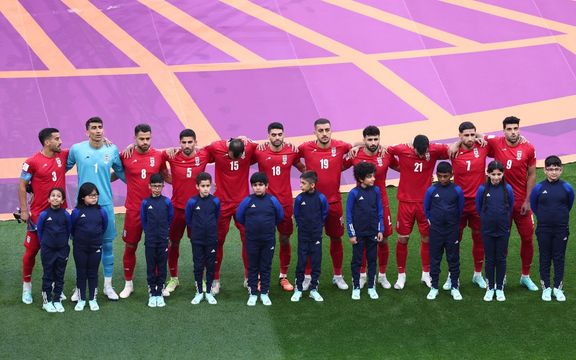
Why Iran’s football (soccer) team in Qatar refused to sing the national anthem in its first game, which was their subtle gesture amid popular protests.
Every country has national symbols that represent its rich culture and history, traditions, and unique attributes of the land and its people. The national anthem is one such symbol that evokes feelings of patriotism among the citizens, binds them with a united purpose and collective identity, and reminds them of what they perceive as their nation's glorious heritage. It is nearly universal that national anthems demand reverence and are viewed by many as a sacred representation of their nation. It is common to see people rise and place a hand on their heart to show their commitment to their land and display their patriotism as they hear their anthem performed.
As Iran’s widespread protests enter their third month, there is an unusual phenomenon that is visible on the world stage. Many Iranians are distancing themselves from their national anthem. Iranian athletes competing in national and international arenas have chosen silence and adopted a posture of mourning during the opening ceremonies with the anthem playing. In none of the clips of popular unrests emerging from Iran has the anthem been featured or chanted. It may seem out of place that a movement of freedom for Iran would eschew what is supposed to be a symbol of national unity. But a review of the history of this anthem adopted in 1990 by the Islamic Republic provides clues as to why Iranians have moved away from this “national symbol.”
The current national anthem of Iran is the third anthem adopted by the Islamic Republic since the 1979 revolution. For three months after the revolution, “Ey Iran” was the anthem which was non-political and non-religious and recounted the history, beauty, resilience, and culture of Iran. Subsequently, to promote the identity of the Islamic Republic, another anthem entitled “Payandeh Bada Iran” was adopted that celebrated the achievements of the Revolution. After the end of the Iran-Iraq war in 1988 and the death of Supreme Leader Ayatollah Ruhollah Khomeini in 1989, a competition was announced for a new national anthem to raise the spirits of the war torn and mournful nation. This led to the adoption in 1990 of “Sorude Melliye Jomhuriye Eslamiye Iran” which translates as the National Anthem of the Islamic Republic of Iran.
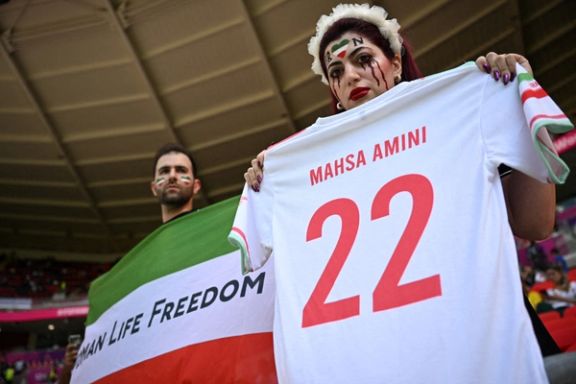
The current anthem is short. The translation of the lyrics are as follows:
“Above the horizon rises the Eastern Sun,
The light in the eyes of the believers in truth,
The month of Bahman the pride of our faith,
Your message, O Imam [Khomeini], of independence and freedom is imprinted on our souls.
O martyrs! Your clamors echo in the ears of time:
May you endure eternally,
The Islamic Republic of Iran!”
In reviewing the lyrics, the only symbolism that celebrates the heritage of the nation is the Eastern Sun. The reference to the Sun has literary and cultural implications to the land, its calendar, and its history. But the rest of the lyrics depart from Iran’s national identity and focuses on the events and figures relating to the 1979 Revolution and its aftermath.
Since nature of the revolution was Islamic, the Sun in the first line ends up only illuminating the “eyes of believers in truth” thereby disregarding those who may believe differently than the ruling power apparatus. The month of Bahman overlaps with February, and this is a reference to the February 1st, 1979, return of the Ayatollah to Iran and the February 11th declaration of the victory of the Islamic Revolution. Why would a calendar month be represented as the pride of one’s faith? This cannot be simply faith in Islam or in the nation. This is faith in the Islamic Republic whose inception was in that fateful February (Bahman) of 1979. This further narrows the people for whom the anthem is meaningful.
In the lyrics, we come across a specific reference to Ayatollah Khomeini and a focus on his message of Independence and Freedom. Nearly 44 years have elapsed since those promises were made, and Iranians today feel that the message of the Ayatollah was only a mirage as Iran today is neither independent nor free by any stretch of the imagination.
The final part of the lyrics places words in the mouths of the fallen soldiers of the Iran-Iraq war of 1980-88. The fallen soldiers, referenced as martyrs, fought for Iran and its territorial integrity. But in a distortion of history, the lyrics suggest that their voices echo in the ears of time to eternally preserve the “Islamic Republic” rather than the nation of Iran. The sons and daughters of fallen soldiers have taken to social media to refute this notion. Additionally, the current system of government in Iran does not bear any of the hallmarks of a republic.
The sustained voices of the people of Iran are loud and clear. They want regime change. They do not wish to have a dictator as a Supreme Leader. They no longer wish to live under the Islamic Republic with its unsustainable policies within Iran and its ill-conceived engagement with the world. So, it is no surprise that an anthem that limits Iran’s definition to the confines of a particular ideology called the “Islamic Republic”, disregards its symbolism and heritage, overlooks its ancient history, and celebrates a figure with hollow promises, is mere propaganda to the Iranians rather than a symbol of national unity.
Nizam Missaghi is an Iranian-American physician. Due to being denied access to higher education under the Islamic Republic, he left Iran at 18 to pursue his education. He currently practices in the US and is also a clinical assistant professor of anesthesiology at the University of Arizona School of Medicine. He serves on the board of Iran Human Rights Documentation Center and has delivered lectures and written articles on Iran related topics.
The opinions expressed by the author are not necessarily the views of Iran International

Iran and the US are set for their clash on the soccer pitch with both at the risk of elimination from the 2022 Qatar World Cup, one of the most contentious in history.
The final of Group B – the most politically charged group at this year's tournament – is set to be held on Tuesday night. Iran won its previous match against 10-man Wales 2-0 after its humiliating 6-2 loss against England. The Americans, however, displayed a stable performance in their two earlier matches that ended with a goalless draw against England and a 1-1 tie with Wales.
The Iranian squad – nicknamed Team Melli – needs at least a draw to book a berth for the knockout stage but the Yanks must defeat Iran if they want to keep their hopes alive in the competitions. However, Team Melli players are between a rock and a hard place as many Iranians believe the so-called national team does not represent the nation and is only a propaganda tool for the ruling Islamic regime.
One of the controversial issues is whether or not Team Melli would sing along with the Islamic Republic anthem. The players remained silent during their opener against England but after the match, people’s reactions on social media and streets indicated that the gesture was not enough to forgive the players, who have lost popularity due to their lack of support for the current wave of popular protests. In their second match, the players sang along with the anthem and even celebrated boisterously after scoring goals and winning the match, setting the ground for the world to witness the rift in Iranian society.
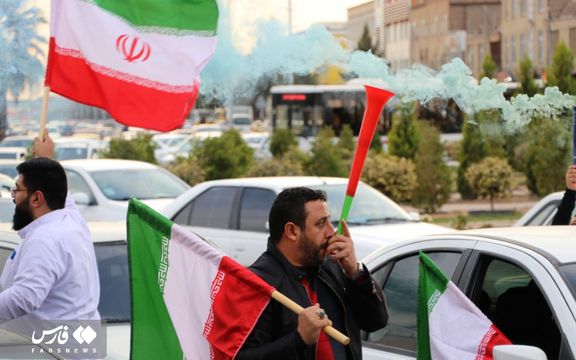
Most Iranians were filled with mixed emotions following the match against Wales. Until recently, whenever Team Melli managed to defeat another country, people would pour into streets and celebrate as security forces were watching and waiting for them to start chanting antigovernment slogans, so they would intervene and disperse the crowd. This time was different. Security forces – some of whom were killing the antigovernment protesters since September – seemed to have been ordered to celebrate and dance on streets, creating some of the most surreal scenes in large cities. The regime had managed to make the players so distant from the people that an event – which historically tends to morph into an antigovernment rally – turned into a show of public satisfaction for the regime.
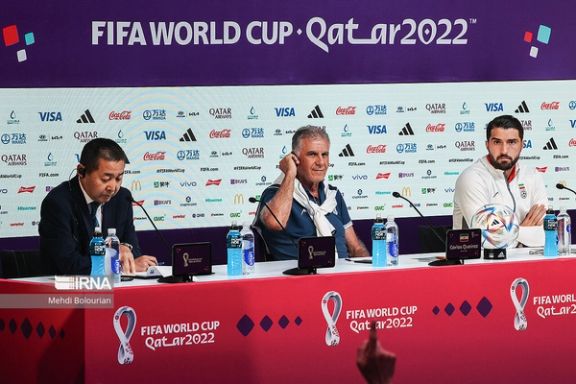
It did not take long until documents and audio footage were leaked online that proved people’s conjectures were actually right. The hacktivist group Black Reward got access to Fars news agency, affiliated with the country’s Revolutionary Guards, and released documents that showed the Islamic Republic had taken numerous measures to make the best use of the World Cup opportunity in Qatar. They had done everything they could think of for a good show in support of the Islamic Republic: from giving free tickets to over 6,000 of their apparatchiks to attend the matches; collaborating with Qatari officials to get the list of people who had bought tickets, and ensuring that Team Melli’s coach Carlos Queiroz would cooperate with them in their plans. They even pulled some strings to make sure that Iran International reporters were not allowed in Qatar.

Citing a source involved in the security of the games, CNN reported Monday that even the families of Team Melli players have been threatened with imprisonment and torture if the players fail to “behave” ahead of the match against the USA. The source added that the players were called to a meeting with members of the Revolutionary Guard (IRGC), saying that they were told their families would face “violence and torture” if they did not sing the anthem or if they show any act of protest against the Tehran regime.
Sunday night, Iran’s President Ebrahim Raisi also held a phone conversation with Qatari Emir Tamim bin Hamad Al Thani and football was not mentioned in official reports about the call, but for many Iranians something must have been discussed.
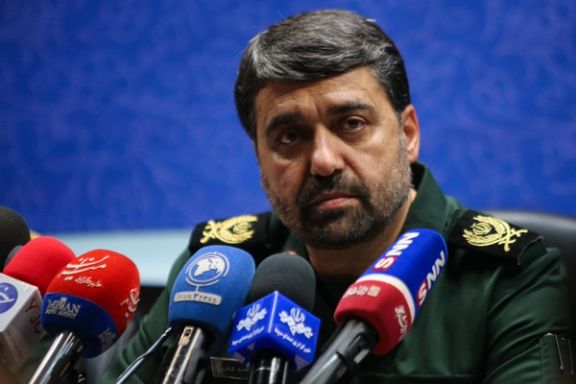
An audio file obtained by the hacktivist group, Black Reward, has revealed concerns among Iranian officials about worn-out security forces, media failure and strikes.
Black Reward found access to Fars News Agency’s digital files in recent days providing Iran International with an audio tape of a meeting between a Revolutionary Guard general and a group of media managers or representatives from outfits affiliated with the IRGC.
We published one part of the audio file Sunday which detailed coordination between Iran and Qatar to silence dissidents during the World cup. The new part of the file is about plans to quell popular protests in the country.
In the file, which is almost two and a half hours long, Qasem Qoreyshi, the deputy commander of the paramilitary Basij and media representatives have expressed concern about the fatigue of the regime’s security forces, the strikes in 22 provinces and the defeat of the Islamic Republic in the “media war”.
Qoreyshi also speaks against Molavi Abdolhamid, the Sunni Friday Prayer Imam of Zahedan in Sistan-Baluchestan province in the southeast, making suggestions to damage his reputation.
In early November Abdolhamid strongly criticized the authorities for their brutality in the province, holding Supreme Leader Ali Khamenei responsible for government violence against Sunnis and other protesters.
In the meeting, state media managers say 22 provinces were the scene of strikes on November 15, adding that around 70 to 100 percent of markets and bazaars were shut down on that day.
Based on the file, most of the closures were in capital Tehran and in some cities almost 100 percent of the shops and businesses were closed.
It is also mentioned that students in 62 universities and colleges across Iran have held gatherings while 11 others were the scene of sit-ins.
In another part of the leaked file, Qoreyshi says the attack on Sharif University, October 2, was carried out by agents of the Ministry of Intelligence.
In the meeting it is also stated that the reformists had separate meetings with President Ebrahim Raisi, Chief Justice Gholam-Hossein Mohseni-Ejei and National Security Chief Ali Shamkhani.
Media reports in the past week confirm that Iran’s ostracized reformists have been meeting officials and trying to suggest solutions about how to pacify the protests, so far with no apparent success.
According to the media managers, Ali Shamkhani, has predicted that sanctions against the Islamic Republic will increase and more “investments” will be made “in media war.”
For regime officials, ‘media war’ means winning the narrative, which has become much more difficult with people having mobile phones and access to the Internet to share scenes of protests and the subsequent brutality of the security forces.
Someone also quotes Shamkhani as saying that “we completely failed in the media war.” In another part of the file, he is also quoted as expressing that 70% of Iranians believe their living conditions are declining.
It is also revealed in the file that Supreme Leader Ali Khamenei has complained about the silence of the members of the Expediency Council regarding the protests.
According to one of the speakers, Khamenei in his meeting with Police Chief Hossein Ashtari has warned that “You must not lose your confidence.”
The managers of the state-affiliated media have also demanded a pay raise for special police forces warning, “There is no good news about police forces. They are exhausted and so unhappy, especially after the events happened in Sistan and Baluchestan.”
Iranian security forces killed almost 100 Baluch citizens, including children, and injured hundreds of others after firing assault rifles, shotguns and teargas at protesters, bystanders and worshippers during a violent crackdown after Friday prayers on September 30 and also later in October and November.
According to Qoreyshi, Khamenei demanded that Molavi Abdolhamid must be warned about his comments.
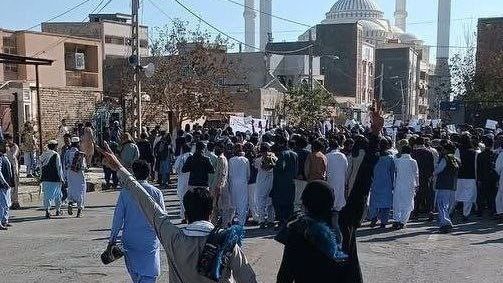
Qoreyshi adds that “We made a mistake about Abdolhamid. We first eliminated tribal leaders in the region to give more credit to Abdolhamid. However, he didn’t carry much weight [in the past].”
The media managers also express concern about the deteriorating health condition of detained rights activist Hossein Ronaghi saying that his possible death before the World Cup can lead to another Mahsa Amini situation because he “has lots of fans in Azarbaijan Province.”
At the beginning of the meeting, one of the participants says 10,000 World Cup 2022 tickets will be distributed among the government-affiliated forces to go to stadiums in Qatar. He says these spectators will be accommodated in Kish Island in southern Iran to be transported to Qatar to watch the matches.
Another person says, “there are five thousand cameras in stadiums, and they record every move of the opponents of the Islamic Republic.”

A top security official in Iran’s Esfahan province says a member of the Revolutionary Guard has been killed on Monday.
Deputy Governor of Esfahan, Mohammad Reza Jan-Nesari told ISNA that in the early hours of Monday one of the IRGC members, identified as Reza Dastani, was shot several times with a firearm on the way to work.
He also added that efforts are underway to identify and arrest the attackers, saying additional information about the intelligence measures taken will be announced later.
So far, authorities have not provided any information about Dastani’s rank or post in the IRGC or its Basij paramilitary unit. However, most personnel affiliated with the Revolutionary Guards have been involved in suppressing popular protests in the past 75 days.
The killing comes one week after Colonel Davoud Jafari, a senior aerospace commander lost his life in what Iran said was a roadside bomb blast on the outskirts of the Syrian capital, Damascus. He could have also been killed in one the frequent Israeli air strikes on Iranian bases in Syria.
The IRGC-affiliated Tasnim News Agency said Jafari served as one of the Iranian officials responsible for the seizure of two US Navy command boats carrying 10 US personnel in the Persian Gulf in January 2016.
Jafari was involved in the deployment of Iranian air defense systems in Syria and Lebanon.
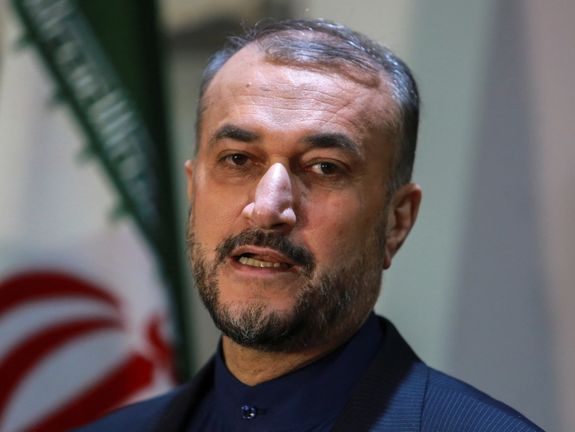
Iran’s foreign minister has met with and expressed appreciation to two interrogators and government TV figures who were recently sanctioned by the United States.
Hossein Amir-Abdollahian on Monday held a meeting with Ameneh Sadat Zabihpour and Ali Rezvani, two infamous ‘correspondents’ working for the state TV.
Amir-Abdollahian said “Western politicians claim to support free media, but they have shown in practice that their positions and statements are hypocritical and based on double-standards.”
US Treasury sanctioned six senior officials with Iran’s state-run media corporation this month over their role in broadcasting hundreds of coerced confessions of Iranians whose relatives died in government custody.
Treasury said Rezvani and Zabihpour had extracted and aired forced confessions in the style of news documentaries.
In 2020, Rezvani interviewed Ruhollah Zam, an Iranian journalist who was abducted, brought to Iran, and later executed by the regime.
US Treasury also added that Zabihpour has a long history of direct involvement in the broadcast of forced confessions of dual nationals, civil society activists, political prisoners, writers, and religious minorities.
In 2017, Zabihpour produced a documentary that tried to portray Nazanin Zaghari-Ratcliff, a British-Iranian woman held hostage by the IRGC on charges of “collaborating with foreign institutions” as a secret agent.
“The United States remains committed to supporting the Iranian people as they continue their peaceful protests. We will continue to hold Iranian officials and government institutions accountable for their human rights violations and their censorship of the Iranian people,” noted Under Secretary of the Treasury for Terrorism and Financial Intelligence Brian E. Nelson.